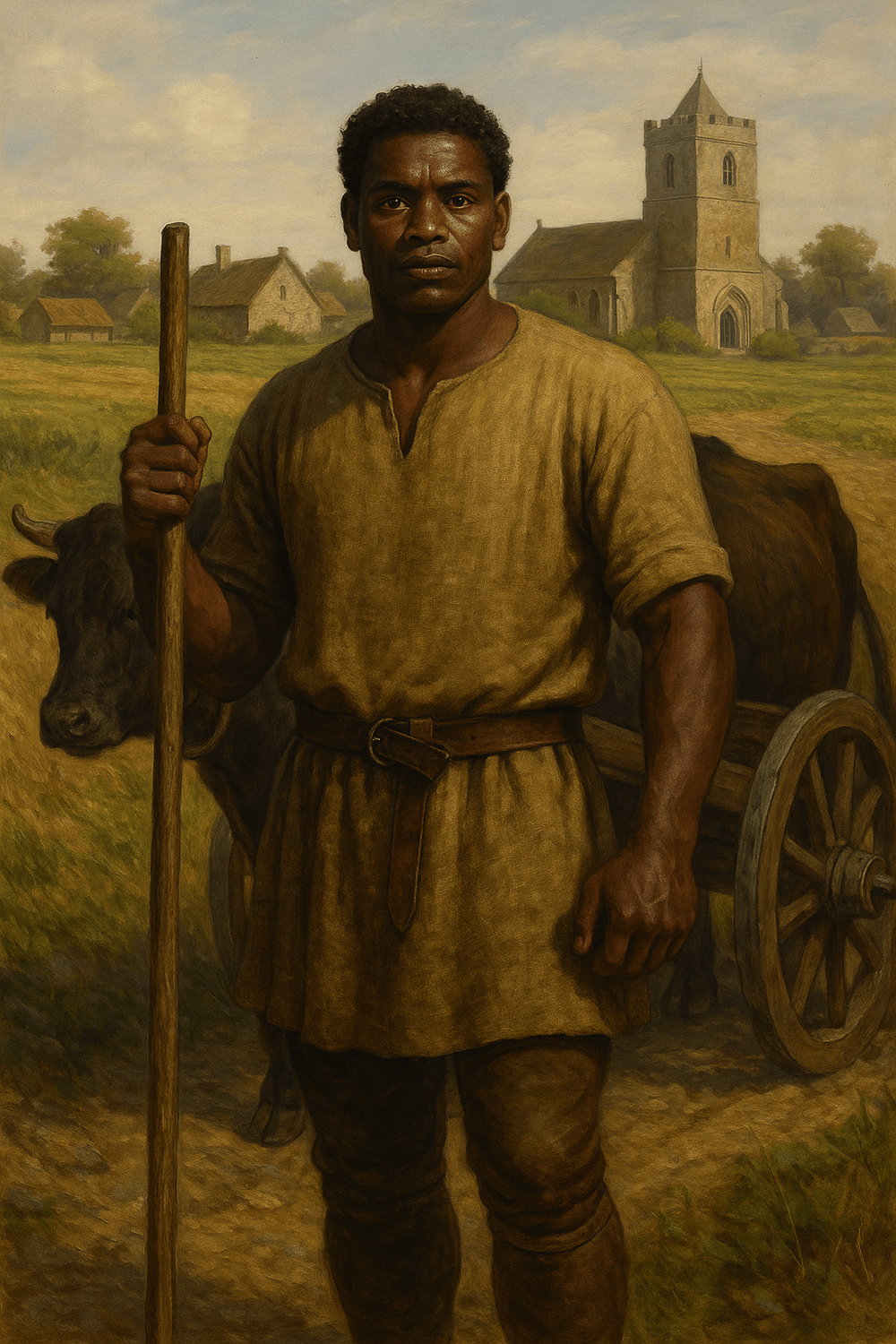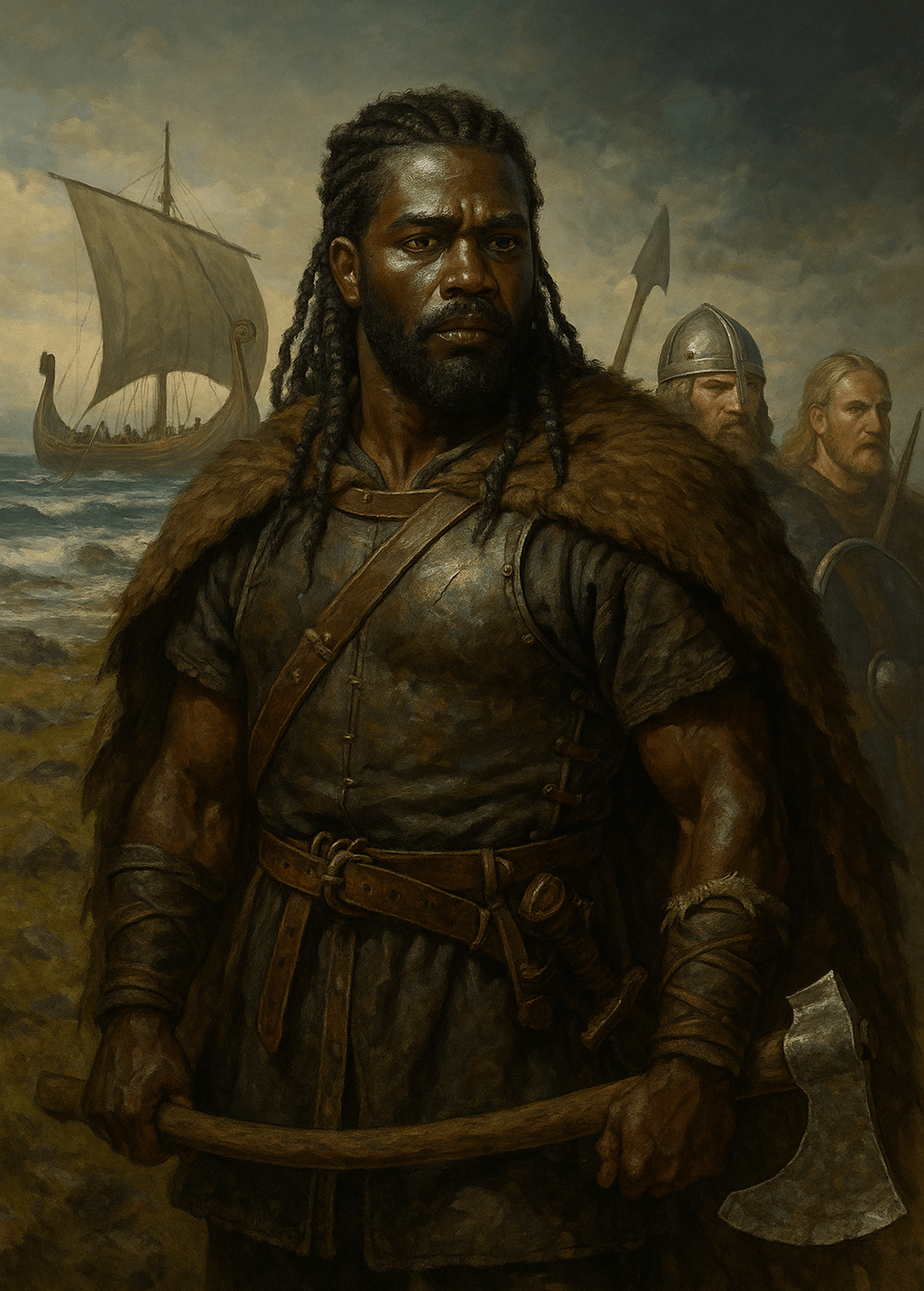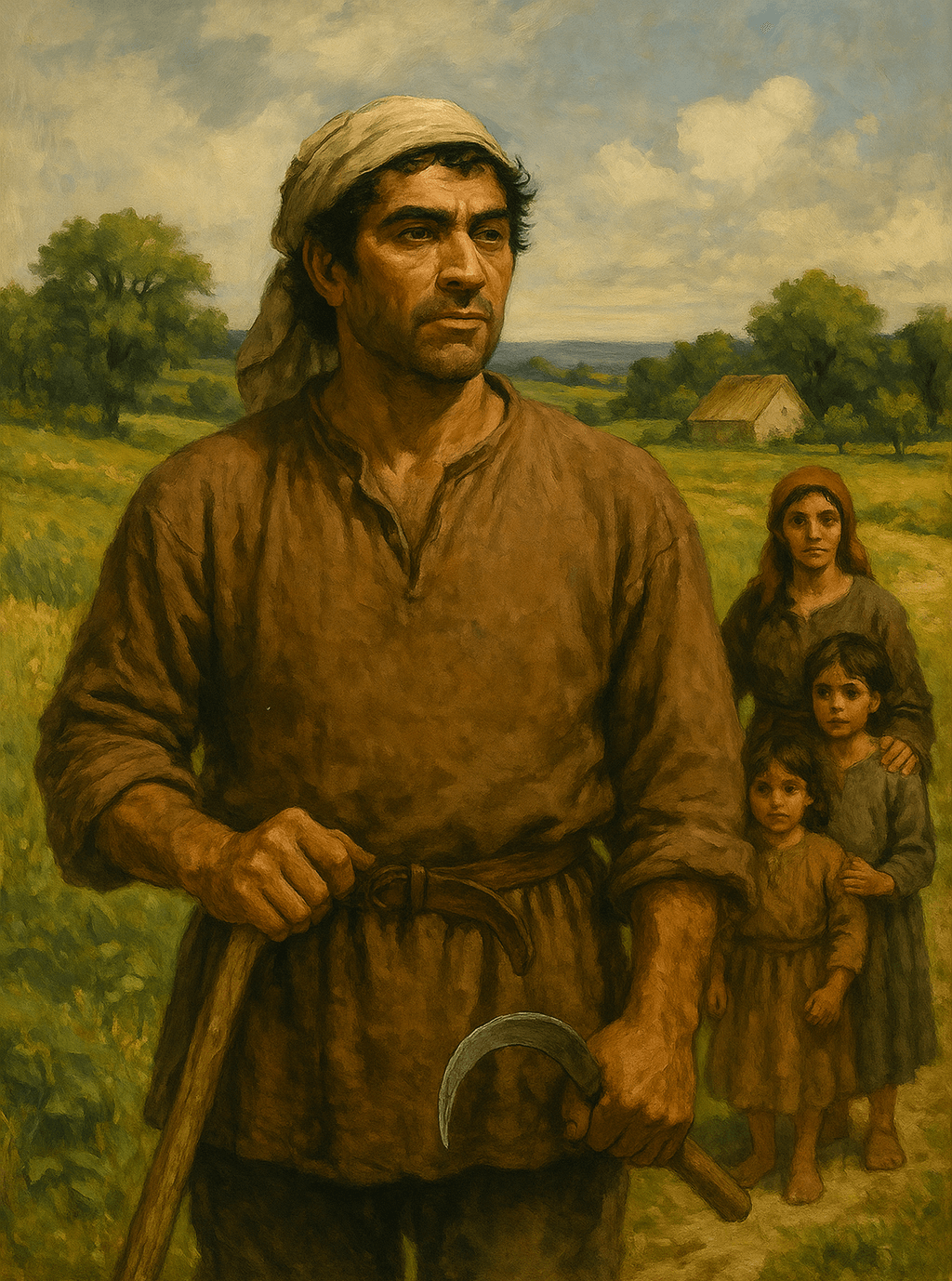Britain’s Forgotten Dark Ancestors: The Black and Brown Races of Early England
Long before the Atlantic slave trade, and long before the concept of "race" as we know it today, there existed a forgotten chapter of British history—a time when the isles were home to a visibly diverse population that included people of dark and even black complexion. This isn't conjecture or modern projection. It's documented, witnessed, and etched into the very names, customs, and physical features passed down through generations.
What happened to these people? And why were they forgotten?
The Black and Brown Peoples Among the Anglo-Saxons
In Anglo-Saxon England, names like Blacman, Blac’sunu, and Blaccheman appear in written records. These names literally meant "Black man" or "Son of the Black man." Even more telling, terms like sweart and dun were used to describe brown or dark-skinned individuals—not symbolically, but as a direct reference to their appearance.
Evidence of these darker settlers is preserved in dozens of place-names: Blakeney, Blakenham, Blacmanstone, and Blackmere, among others. These were not names given to Africans in the modern era; they come from the Domesday Book and earlier Anglo-Saxon charters, showing that darker-complexioned individuals were integral to early British society.
In counties like Lincoln, we find Domesday names like Suart, Suarting, and Suaradine, further underscoring the presence of darker-complexioned landholders in the medieval English record.

Figure 1.
AI-generated depiction of “Blacman,” a dark-skinned Anglo-Saxon landholder from Domesday-era England. Inspired by historical records referencing names like Blacman and Blac’sunu, this image reflects the often-overlooked presence of Black and brown individuals in early British society. (Reconstructed for educational purposes.)
The Black Gentiles and Vikings
In Irish and Welsh annals, references to Black Vikings and Dubh-Ghenti (Black Gentiles) describe Norse seafarers who were not blond-haired invaders, but darker in appearance—sometimes even described as black. These Black Gentiles fought, traded, and settled across the British Isles.
In 852 AD, the Irish recorded that Black Gentiles arrived in Dublin and fought for three days. Later records mention Gothrit, a son of Harald, leading black men who captured Anglesea. Welsh sources tell of Mereduth redeeming captives from these "black men."
These weren’t poetic flourishes. The color reference was distinguishing and racial, marking these men as visibly different from the fair Danes and Saxons.

Figure 2.
AI-generated depiction of a Black Viking warrior, inspired by historical records describing the Dubh-Ghenti or “Black Gentiles” who fought and settled across the British Isles in the 9th century. Based on Irish and Welsh annals, this image reflects the often-overlooked racial diversity among Norse seafarers. (Reconstructed for educational purposes.)
The Wends: Slavs of Dark Complexion
Further east, the Wends, a tribal group of Slavic origin from Saxony and the Baltic coast, were repeatedly described as dark in complexion. Ethnologists like Beddoe and Ripley noted that the Wends of Lower Saxony and Mecklenburg had a higher rate of brunette or even black-skinned individuals than the surrounding Teutonic populations.
“The Wends who still exist in Lower Saxony are of a dark complexion, and are of the same stock as the Sorbs or Serbs of Servia.” — The Origin of the Anglo-Saxon Race, p. 84
Place-names in England like Wendlesbury, Wendlesore (now Windsor), Wendlescomb, and even Blachenmanstone (now Blackmanstone near Romney Marsh) preserve the memory of these people. Linguistic, geographic, and ethnological clues tie the Wends to a significant portion of the population in counties like Buckinghamshire, Hertfordshire, Dorset, and Kent.
Domesday records and ethnological surveys confirm the “dark-complexioned” character of the population in areas such as:
Devizes, Wiltshire — a region where racial fusion is evident in the modern darker hues.
Gillingham, Dorset — where darker hues are attributed to settlers of a darker race.
New Forest District, Hampshire — described as being inhabited by a dark-complexioned race.
Romney Marsh, Kent — a coastal region with persistent darker traits traced to ancient Celtic or Wendish settlers.
“The New Forest is inhabited by a mixture of races which almost defy classification, the complexion in general being dark.” — Mackintosh, Ethnological Observations
Anthropological records further show that the Mecklenburg coast in Germany—home of the Wends—contained 11 to 15% brunettes, higher than surrounding Teutonic areas, reinforcing their status as a darker racial stock.

Figure 3.
AI-generated reconstruction of a sturdy Wendish farmer of Saxony, based on ethnological descriptions from Beddoe and Ripley. These dark-featured Slavic agriculturalists were part of a broad migration into early England, leaving traces in names, land customs, and population traits across Dorset, Wiltshire, and Buckinghamshire. (Illustration for educational purposes.)
Black and Fair Hewald: The Missionary Saints
One of the most compelling stories comes from early Christian records. The missionary brothers Black Hewald and Fair Hewald were martyred in Saxony. Their names reflected their actual skin tone. Both were canonized and honored in Westphalia. Their story—that two Christian missionaries bore names marking a contrast of complexion—offers remarkable evidence of visible racial diversity within early Christianized Europe.
“They slew both the Black and Fair Hewald... for, as their names indicate, they bore in their different complexions evidence of the existence of the fair and dark people among the Anglo-Saxon stock.” — p. 115
Survivals in Physical Traits and Custom
Throughout southern England—in Wiltshire, Dorset, Hampshire, and the New Forest—anthropologists recorded populations with a marked prevalence of dark hair, eyes, and skin tone. Beddoe noted that “the blonde types are common from Wareham to Yeovil,” but added that in central Hampshire, darker types still appeared regularly.
Certain legal customs, such as partible inheritance (land divided equally among sons), appear to have survived in regions like Dorset and Hampshire. These customs are traced to Wendish, Slavonic, or Gothic traditions, further supporting the idea of a culturally and racially diverse Anglo-Saxon population.
“From what has already been said, it will be seen that the Kentish custom of partible inheritance can be traced to a primitive Gothic source, and the custom of junior right to a primitive Wendish or Slavonic source.” — p. 218
Why It Was Forgotten
As England moved into the modern era, especially after the Norman Conquest and the invention of race-based slavery, earlier markers of difference were recast through a new lens. Names once denoting complexion became surnames. Distinct ethnic origins were absorbed into a generalized category of "white."
But the evidence is still there—in the bones, in the land, in the names, and in the annals.
A Call to Remember
The dark-complexioned peoples of early Britain—from Black Vikings to Slavic Wends—are not a myth. They are part of the real, documented, and now often overlooked ancestry of many in the British Isles.
To uncover these stories is not to rewrite history, but to remember it.
“They bore in their different complexions evidence of the existence of the fair and dark people among the Anglo-Saxon stock.” — The Origin of the Anglo-Saxon Race, p. 115
Let us know what you think in the comments!
